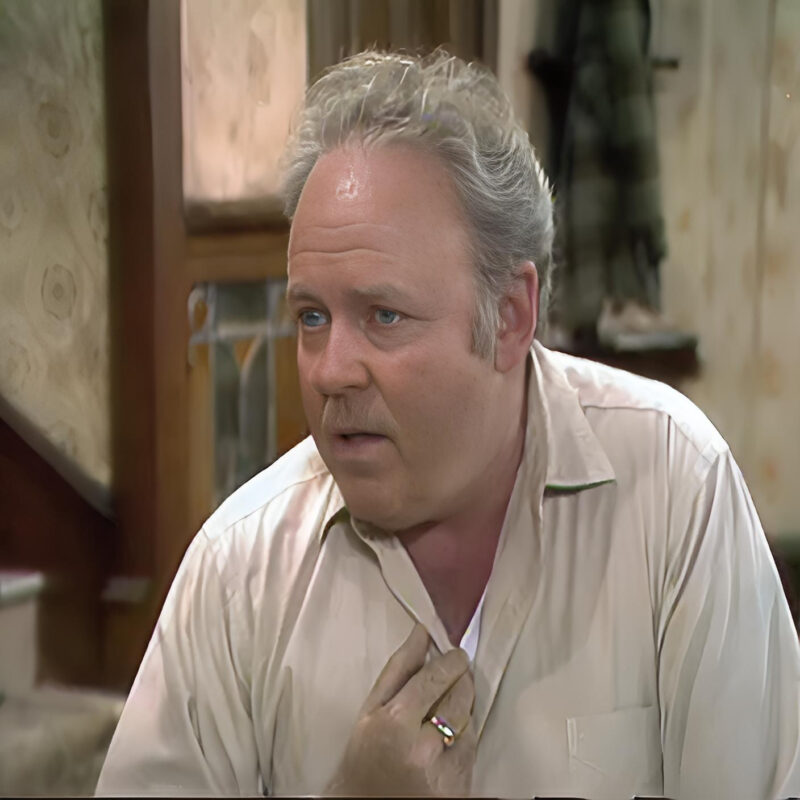
Renowned author and public intellectual Chimamanda Ngozi Adichie has weighed in on the enduring impact of the classic television show “All in the Family” on racial discourse. Known for her incisive explorations of identity and power in novels like “Americanah” and “Half of a Yellow Sun,” Adichie provides a critical analysis of the show’s approach to addressing race and its broader implications for American society.
“All in the Family,” which aired from 1971 to 1979, was revolutionary for its time, breaking new ground by directly engaging with controversial social issues through the lens of comedy. The show centered around the character of Archie Bunker, a working-class man with bigoted views, and used his interactions with family and friends to highlight the absurdity of prejudice.
Adichie acknowledges the show’s historical significance but critiques its execution and the potential for reinforcing negative stereotypes. “Archie Bunker was designed to be a caricature of bigotry,” Adichie explains. “However, the humor often derived from his offensive remarks can have the unintended effect of normalizing such views for some audiences. This presents a paradox where the intention to mock bigotry might also serve to perpetuate it.”
One of Adichie’s primary concerns is how the show handled the complex issue of race. “All in the Family” often placed racial tensions at the forefront, using Archie’s interactions with Black characters to expose his prejudices. Yet, Adichie argues that the comedic framing of these interactions could undermine the seriousness of the issues at hand. “By making racism a punchline, there is a risk that viewers might not fully grasp the profound harm caused by such attitudes,” she notes. “The laugh track accompanying Archie’s racist remarks could inadvertently signal to some that these views are acceptable.”
Adichie also examines the show’s influence on racial discourse in America. “All in the Family” was both a mirror and a catalyst for discussions about race, reflecting societal tensions while also shaping them. “The show brought conversations about race into living rooms across America, which was a significant achievement,” Adichie acknowledges. “However, the framing of these conversations through satire and comedy required a level of nuance that was not always present.”
Moreover, Adichie highlights the show’s portrayal of minority characters and the dynamics between them and the Bunkers. “The representation of Black characters like George Jefferson was a double-edged sword,” she says. “On one hand, it provided visibility and a platform to address racial issues. On the other hand, these characters were often depicted through the lens of Archie’s prejudices, which could limit their complexity and reinforce stereotypes.”
Despite these criticisms, Adichie recognizes the importance of “All in the Family” in the broader landscape of American television. The show’s willingness to engage with difficult topics paved the way for more nuanced and direct discussions about race in subsequent media. “It opened doors for more sophisticated portrayals of racial issues, serving as a stepping stone for future shows to build upon,” she remarks.
Adichie’s analysis underscores the complexities of using media as a tool for social change. While “All in the Family” made significant strides in addressing race and prejudice, its approach also highlighted the challenges of balancing satire with sensitivity. Her critique calls for a deeper consideration of how humor and representation intersect and the potential consequences of their interplay.
In a contemporary context, where conversations about race and representation are more critical than ever, Adichie’s insights into “All in the Family” offer valuable lessons. They encourage creators and audiences to strive for portrayals that challenge prejudices without inadvertently reinforcing them, promoting a more inclusive and thoughtful approach to media and its impact on society.
